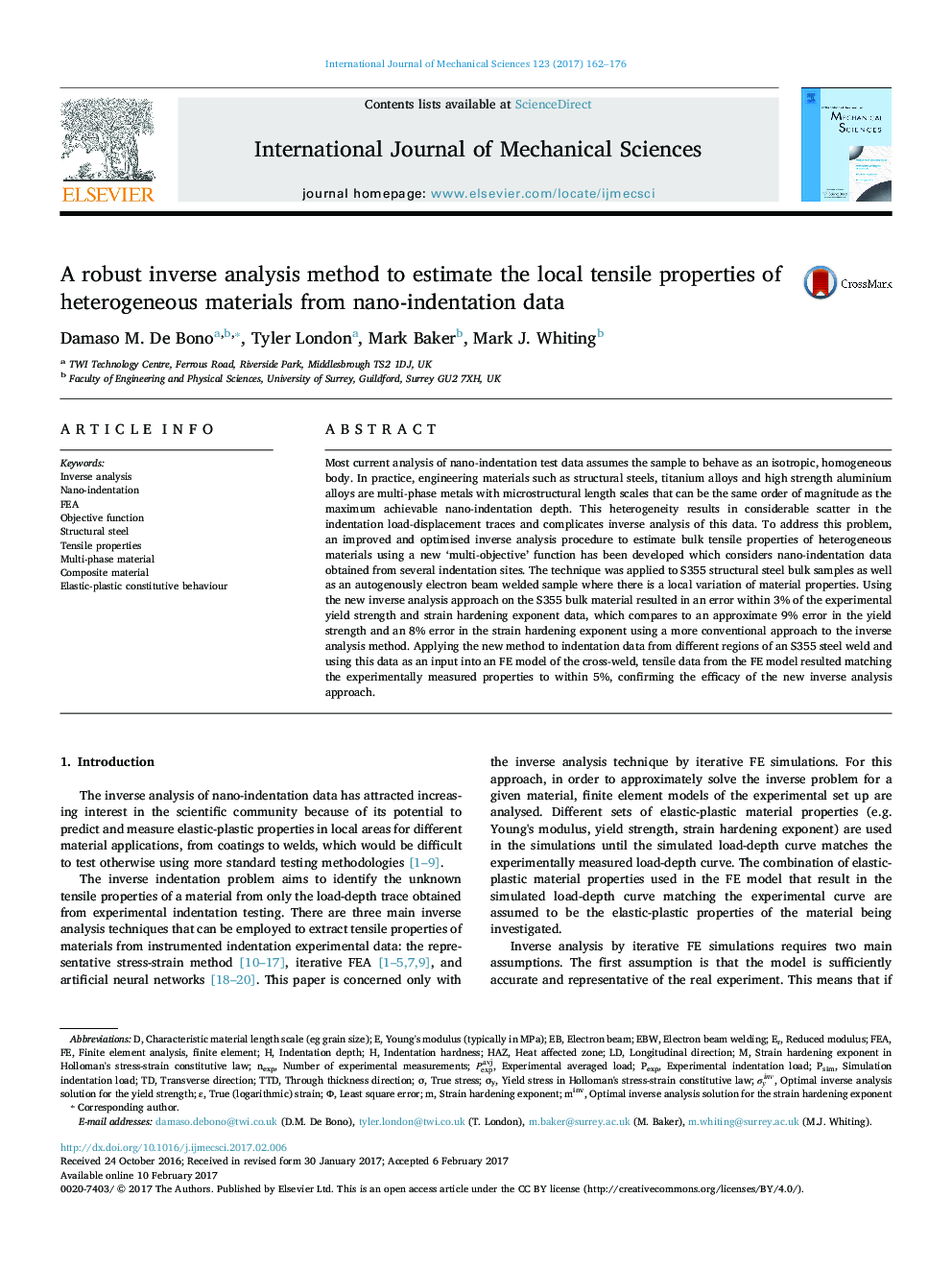| کد مقاله | کد نشریه | سال انتشار | مقاله انگلیسی | نسخه تمام متن |
|---|---|---|---|---|
| 5016118 | 1464963 | 2017 | 15 صفحه PDF | دانلود رایگان |
- An optimised and robust inverse analysis procedure to estimate 'bulk' tensile properties of heterogeneous materials from nano-indentation data was developed.
- The optimised inverse analysis approach relies on a newly formulated objective function able to handle the variability of the experimental indentation response due to microstructural heterogeneity.
- The improved inverse analysis was successfully used to accurately estimate local tensile properties of structural steel and an electron beam welded sample.
Most current analysis of nano-indentation test data assumes the sample to behave as an isotropic, homogeneous body. In practice, engineering materials such as structural steels, titanium alloys and high strength aluminium alloys are multi-phase metals with microstructural length scales that can be the same order of magnitude as the maximum achievable nano-indentation depth. This heterogeneity results in considerable scatter in the indentation load-displacement traces and complicates inverse analysis of this data. To address this problem, an improved and optimised inverse analysis procedure to estimate bulk tensile properties of heterogeneous materials using a new 'multi-objective' function has been developed which considers nano-indentation data obtained from several indentation sites. The technique was applied to S355 structural steel bulk samples as well as an autogenously electron beam welded sample where there is a local variation of material properties. Using the new inverse analysis approach on the S355 bulk material resulted in an error within 3% of the experimental yield strength and strain hardening exponent data, which compares to an approximate 9% error in the yield strength and an 8% error in the strain hardening exponent using a more conventional approach to the inverse analysis method. Applying the new method to indentation data from different regions of an S355 steel weld and using this data as an input into an FE model of the cross-weld, tensile data from the FE model resulted matching the experimentally measured properties to within 5%, confirming the efficacy of the new inverse analysis approach.
204
Journal: International Journal of Mechanical Sciences - Volume 123, April 2017, Pages 162-176
